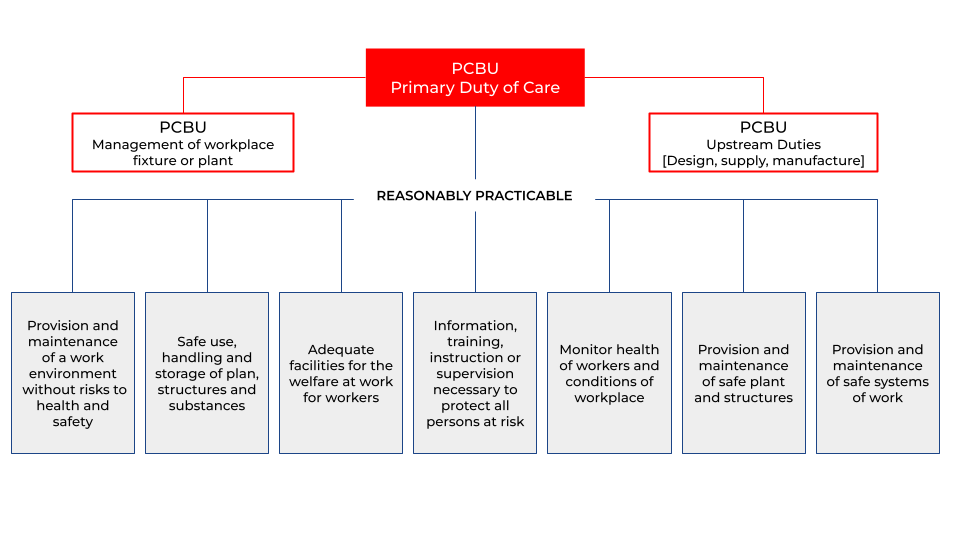- provide and maintain a safe work environment
- provide and maintain safe plant and structures
- provide and maintain safe systems of work
- safe use, handling and storage of plant, structures, and substances
- provide accessible and adequate facilities
- provide any instruction, training, information, and supervision
- monitor workers’ health and conditions at the workplace and
- maintain any accommodation owned or under their management and control to ensure the health and safety of workers occupying the premises
 While all businesses must meet the compliance requirements of Australian workplace health and safety legislation, the best way to communicate how they will do this is by developing their own safety management system or WHS management system.
While all businesses must meet the compliance requirements of Australian workplace health and safety legislation, the best way to communicate how they will do this is by developing their own safety management system or WHS management system.
What is a (WHS) management system?
A (WHS) management system is not to be confused with a safety management plan. A workplace health and safety management system is a corporate level set of policies, standards, procedures and plans that systematically manages health and safety at work to minimise the risk of injury and illness from workplace operations. These documents determine the objectives and describe the framework for an organisation’s health and safety management. As mentioned, each business is responsible for developing its own WHS management system which is customised to suit the particular business (size, structure etc.), nature and scope of work and industry requirements. The scope and scale of a WHS management system should provide the company and people operating within the system with the ability to safely complete their work in a manner that ensures that compliance needs are met in a practical way.What is the purpose of a work health and safety management system?
A WHS management system provides a framework for managing health and safety in the workplace and has a number of key components, including: Policy, procedures and commitment – defines purpose and scope and provides a clear direction for the organisation to reduce safety risks for workers and comply with current legislative requirements. Planning – defines the WHS plan with specific work health and safety procedures and rules for different work areas and environments. These help to ensure workers understand their whs obligations and to hold all accountable. Implementation – Identifies resources for effective implementation, roles, responsibility and accountability, training requirements, consultation & communication arrangements, reporting, documentation & data management, risk management, and emergency management. Measurement & evaluation – processes and information required for monitoring and measurement, programs for health monitoring, procedures for incident recording, investigation, analysis and preventive action, work health and safety performance measurement, evaluation and reporting. Review – requirements for work health safety management system review and continuous improvement of the WHS management system. Effective implementation of a WHS management system requires communication of the system across all levels of the organisation. All parties must understand their roles and responsibilities under the safety management system as well as its relationship to other management systems. WHS management systems also require continual monitoring, review and evaluation.Benefits of a Work Health and Safety Management system
Developing and implementing a WHS management system costs money and takes time; however, health and safety is integral to a business’s core operations and essential to its success. An effective WHSMS:- First and foremost, sets expectations and provides information to assist your workers to make better decisions regarding health and safety.
- Reduces exposure to WHS compliance fines and legal action.
- Potentially Reduces insurance premiums.
- empower and encourage workers
- make sense
- support good decision making
- drive engagement and accountability
- encourage communication
- innovate safe work

